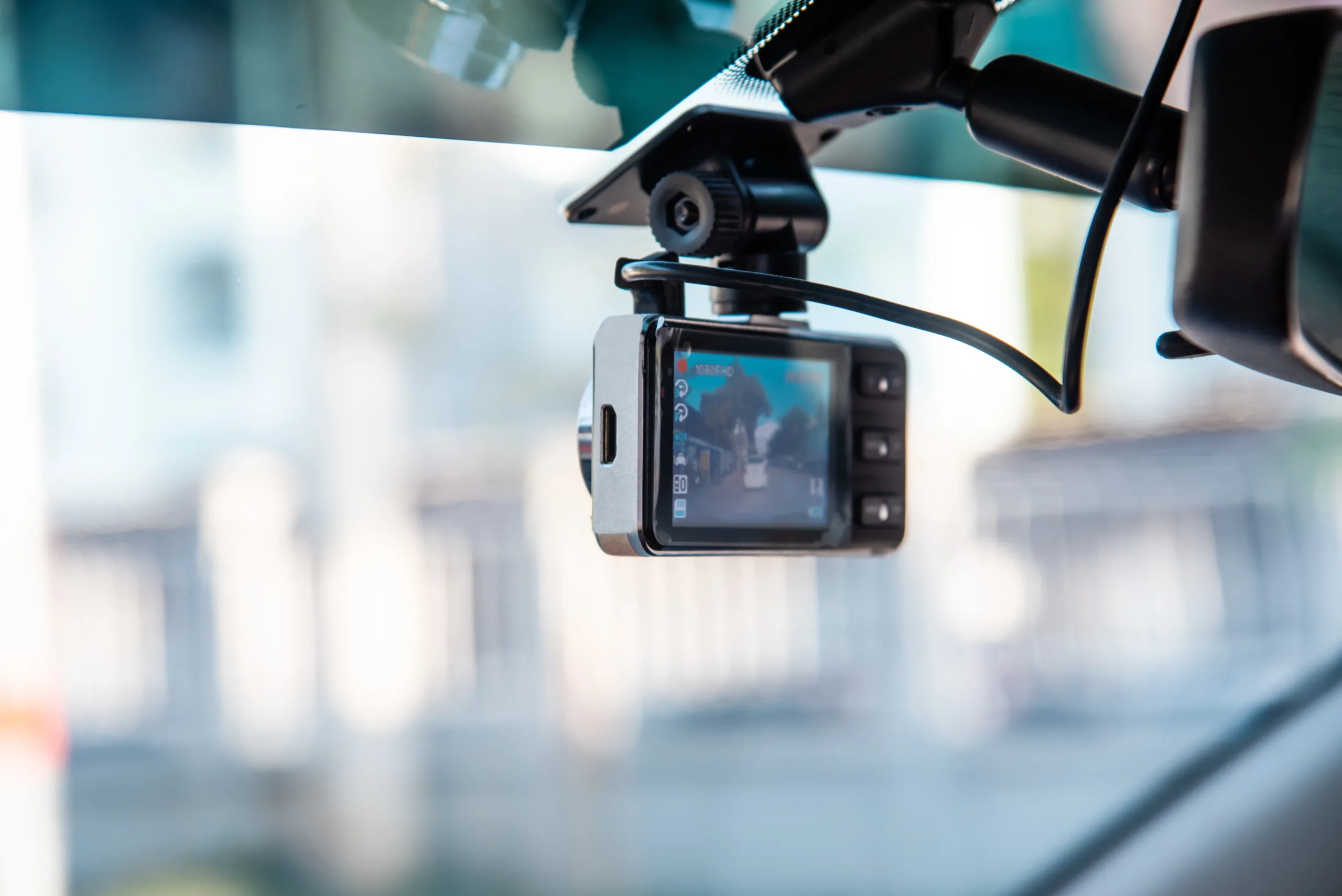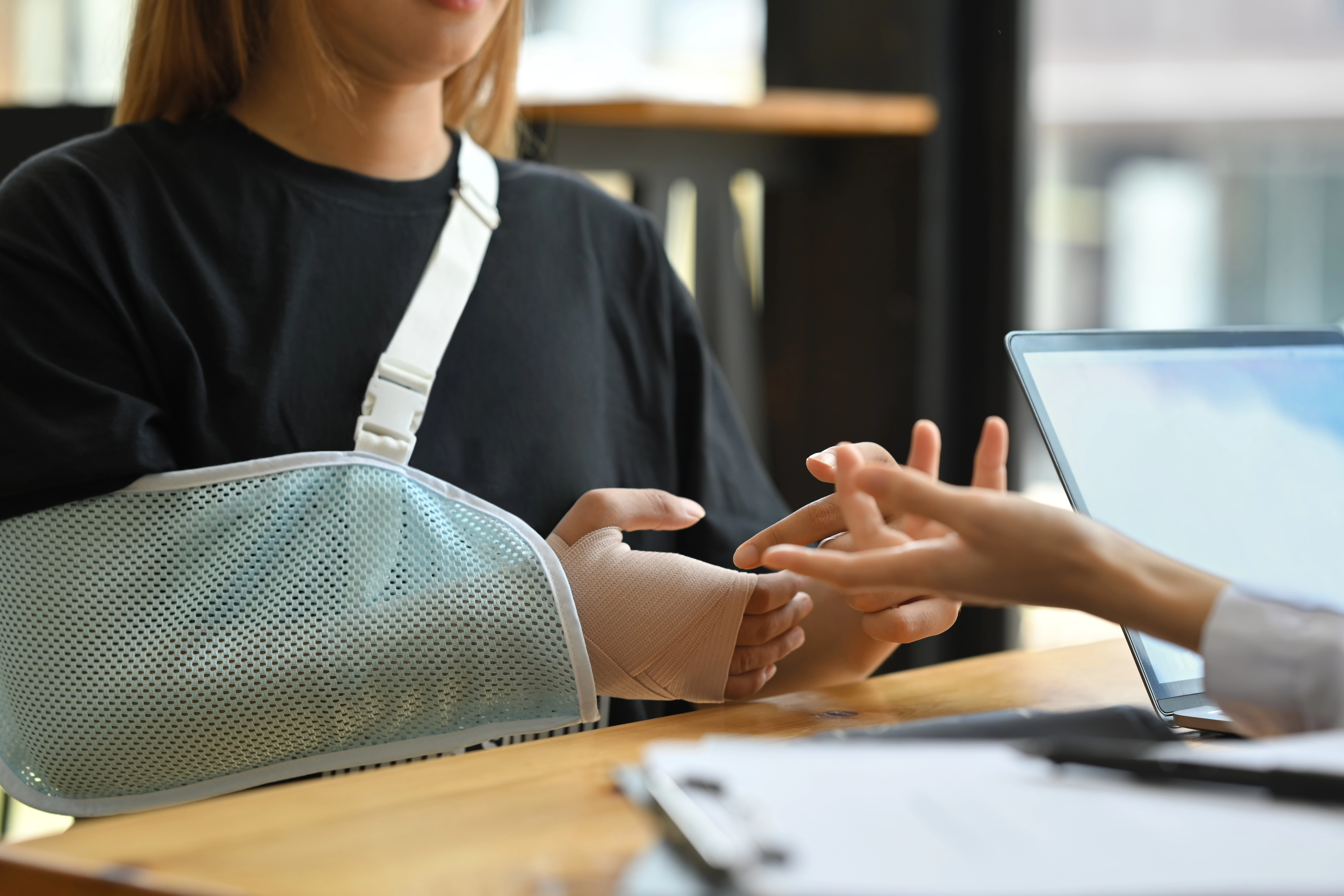Picture this: You’re driving along I-20 near Monroe when suddenly another vehicle swerves into your lane, causing a collision. In the confusion that follows, the other driver claims you were at fault. Without witnesses, it would be your word against theirs—unless you had a dashcam. That small device mounted on your windshield could be the silent witness that tells the true story of what happened.
Dashcam usage has surged in Louisiana in recent years, and for good reason. These compact recording devices can capture crucial moments before, during, and after a collision, providing objective evidence that can make all the difference in determining who was at fault. For Louisiana drivers navigating the state’s busy highways and parish roads, understanding how dashcam footage can protect your interests after a collision is increasingly important.
Dashcam Footage and Louisiana Law: What You Need to Know
Louisiana follows a “one-party consent” law regarding audio recordings, meaning you can legally record conversations as long as one party (in this case, you) consents. This makes dashcams with audio capabilities fully legal in Louisiana. However, there are guidelines to follow regarding placement:
- According to Louisiana Revised Statutes 32:361.1, windshield-mounted devices must not obstruct the driver’s view
- Dashcams should be mounted in a location that doesn’t interfere with airbag deployment
- The device should be secured to prevent it from becoming a projectile in a collision
When it comes to admissibility in court, dashcam footage is generally acceptable as evidence under Louisiana Code of Evidence Article 901, which addresses authentication requirements. The footage must be authenticated, meaning someone must testify that the recording accurately represents what it purports to show. This is typically straightforward if you own the dashcam and can verify its operation.
How Dashcam Evidence Strengthens Your Case
In Louisiana’s comparative fault system, established by Civil Code Article 2323, your compensation may be reduced by your percentage of fault in an accident. This makes proving the other driver’s responsibility absolutely crucial. Dashcam footage can provide:
- Indisputable visual documentation of how the accident occurred
- Evidence of traffic violations by other drivers, such as running red lights or stop signs
- Real-time recording of road and weather conditions that may have contributed to the accident
- Proof of driver behavior before and during the collision
Consider a common scenario in Louisiana: a rear-end collision on a rainy day in Ouachita Parish. Without video evidence, insurance companies might debate whether the lead driver stopped suddenly or if the following driver was tailgating. Dashcam footage from either vehicle could immediately settle this question.
Louisiana’s Comparative Fault System and Your Compensation
Under Louisiana Civil Code Article 2323, the state follows a “pure comparative fault” rule. This means that even if you’re partially responsible for an accident, you can still recover damages—but your compensation will be reduced by your percentage of fault.
For example:
- If you’re found 0% at fault, you receive 100% of awarded damages
- If you’re found 20% at fault, you receive 80% of awarded damages
- If you’re found 80% at fault, you receive 20% of awarded damages
Dashcam footage can significantly impact these fault determinations. In a recent case handled by our firm, dashcam evidence reduced our client’s assigned fault from an initial 40% to just 10%, substantially increasing their compensation.
Types of Louisiana Collisions Where Dashcam Footage Proves Most Valuable
Rear-End Collisions
Louisiana sees thousands of rear-end collisions annually. While the following driver is often presumed at fault, dashcam footage can reveal when the lead driver contributed to the accident through:
- Sudden, unnecessary braking
- Brake-checking
- Driving with non-functioning brake lights
- Cutting off another vehicle
Intersection Accidents
At busy intersections in Monroe and throughout Louisiana, determining who had the right of way can be challenging. Dashcam footage can definitively show:
- Which vehicle entered the intersection first
- Whether a driver ran a red light or stop sign
- If turn signals were properly used
- Whether a driver was distracted at a critical moment
Lane Change Accidents
On multi-lane highways like I-20, lane change accidents are common. Dashcam footage can document:
- Whether proper signals were used
- If a driver checked blind spots
- Whether one vehicle was speeding
- If road conditions affected visibility
Hit and Run Incidents
Perhaps most valuable in hit and run cases, dashcam footage can capture:
- The other vehicle’s license plate
- Identifying features of the vehicle
- The driver’s appearance
- The exact time and location of the incident
What to Do With Your Dashcam Footage After a Louisiana Collision
If you’ve been in an accident and have dashcam footage, take these steps to maximize its value:
- Preserve the original footage immediately. Do not edit or alter it in any way.
- Make multiple backups to prevent accidental loss or corruption.
- Inform responding police officers that you have video evidence of the accident.
- Mention the dashcam footage when filing your insurance claim.
- Consult with a personal injury attorney before sharing the footage with the other party’s insurance company.
Under Louisiana Revised Statutes 32:398, police reports must include available information about accident causes. Providing your dashcam footage to officers can ensure a more accurate report.
Technical Aspects That Affect Dashcam Evidence Quality
Not all dashcam footage is created equal. For maximum evidentiary value, consider these technical factors:
Video Quality
Courts and insurance adjusters need to clearly see what happened. Higher resolution cameras (1080p or 4K) provide clearer images that can capture crucial details like traffic signals and license plates.
Field of View
Wide-angle lenses (120-170 degrees) capture more of the scene but may distort images at the edges. Dual-camera systems recording both forward and rear views provide more comprehensive evidence.
Timestamp Accuracy
Make sure your dashcam’s date and time settings are correct. In Louisiana courts, timestamp accuracy can be crucial for establishing the sequence of events and correlating with other evidence like traffic camera footage or witness statements.
Night Vision Capabilities
Many Louisiana accidents occur during early morning or evening hours. Quality night vision recording can make the difference between usable and worthless footage.
Limitations and Challenges With Dashcam Evidence
While incredibly valuable, dashcam evidence does have limitations:
- Partial perspective: Dashcams only record from one angle and may miss important elements outside their field of view
- Technical failures: Memory card errors, power loss, or camera malfunctions can create gaps in footage
- Authentication challenges: The opposing party may question whether the footage has been altered or edited
- Interpretation disputes: What the footage shows may still be subject to different interpretations
In one Louisiana case, dashcam footage clearly showed a collision, but debate continued over whether road construction signage gave adequate warning to drivers. This highlights how video evidence, while powerful, may not resolve all liability questions.
When to Upgrade Your Dashcam System
If you’re currently using an older or basic dashcam model, consider upgrading if:
- Your current camera doesn’t record in at least 1080p resolution
- You don’t have night vision capabilities
- The camera lacks sufficient storage capacity
- You only have front-facing recording (adding rear recording provides more complete coverage)
- Your timestamp feature is inaccurate or unreliable
Many newer models also offer GPS tracking, which can provide valuable data about vehicle speed and location that corroborates the visual evidence.
Key Takeaways About Dashcam Footage in Louisiana Collision Cases
- Dashcams provide objective evidence that can overcome “he said, she said” disputes
- Louisiana’s comparative fault law makes proving the other driver’s responsibility crucial for maximizing compensation
- Properly preserved and authenticated dashcam footage is generally admissible in Louisiana courts
- The technical quality of your dashcam can significantly impact its evidentiary value
- Dashcam evidence is particularly valuable in rear-end collisions, intersection accidents, lane changes, and hit-and-run incidents
- Always preserve original footage and consult with an attorney before sharing with insurance companies
Frequently Asked Questions
How long should I keep dashcam footage after an accident?
Keep the footage indefinitely, or at least until your case is fully resolved and all appeal periods have expired. Under Louisiana Civil Code Article 3492, you generally have one year from the date of the accident to file a personal injury lawsuit, but the litigation process can take much longer.
Can dashcam footage be used against me if I was partially at fault?
Yes. Under Louisiana’s comparative fault system, dashcam footage showing you were partially at fault could reduce your compensation. However, even partial footage often clarifies the overall situation in ways that benefit fair resolution.
Is consent required to record passengers in my car with a dashcam?
Louisiana is a one-party consent state for audio recording, meaning you (as one party to the conversation) can legally record without informing others. However, as a courtesy, many drivers inform passengers that dashcam recording is in progress.
Can I submit dashcam footage directly to insurance companies?
Yes, but consulting with an attorney first is advisable. Insurance adjusters may interpret footage in ways that minimize their company’s liability. An experienced attorney can help present the evidence in context with other supporting documentation.
What if my dashcam footage contradicts the police report?
This happens more often than you might think. Police reports are based on officer observations and statements taken at the scene, which can contain errors. Dashcam footage that contradicts a police report can be compelling evidence for correcting fault determinations.
Does Louisiana law require disclosure of dashcam footage during insurance claims?
While Louisiana doesn’t have a specific law requiring disclosure, withholding relevant evidence can potentially be considered bad faith. Additionally, if litigation begins, the footage would likely be subject to discovery requirements under Louisiana Code of Civil Procedure Article 1421.
How E. Orum Young Law Can Help You With Dashcam Evidence
If you’ve been involved in a collision in Monroe or anywhere in Louisiana and have dashcam footage, our team at E. Orum Young Law can help you use this valuable evidence effectively. We have substantial experience analyzing video evidence, identifying key elements that establish liability, and presenting this evidence persuasively to insurance companies and courts.
Our attorneys stay current with Louisiana traffic laws and evidentiary requirements, allowing us to maximize the impact of your dashcam footage. We can help authenticate your video evidence, address technical challenges, and counter any attempts to minimize its significance.
Don’t let crucial video evidence go to waste or be misinterpreted by insurance adjusters looking to minimize your claim. Contact E. Orum Young Law today for a free case review. Our team is ready to review your dashcam footage and help you understand how it strengthens your position after a collision.
Your case deserves attention from attorneys who know how to effectively use modern evidence. Reach out today and put our experience to work for you.





